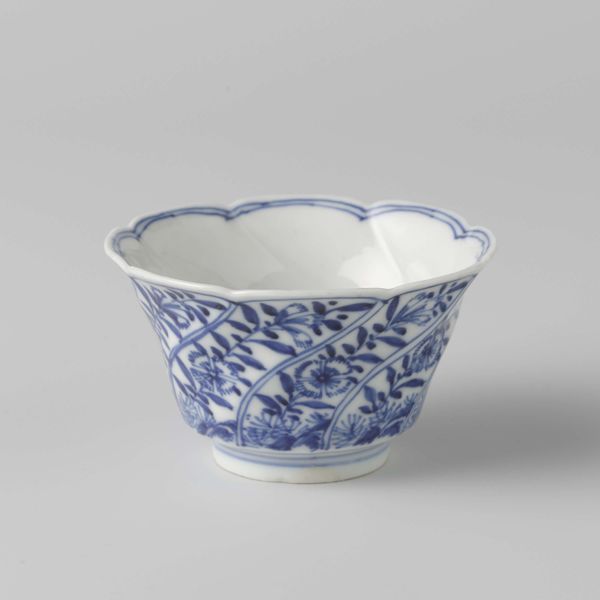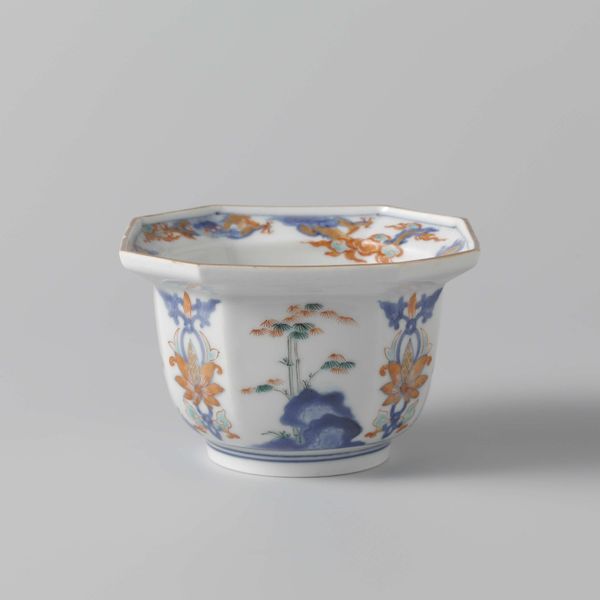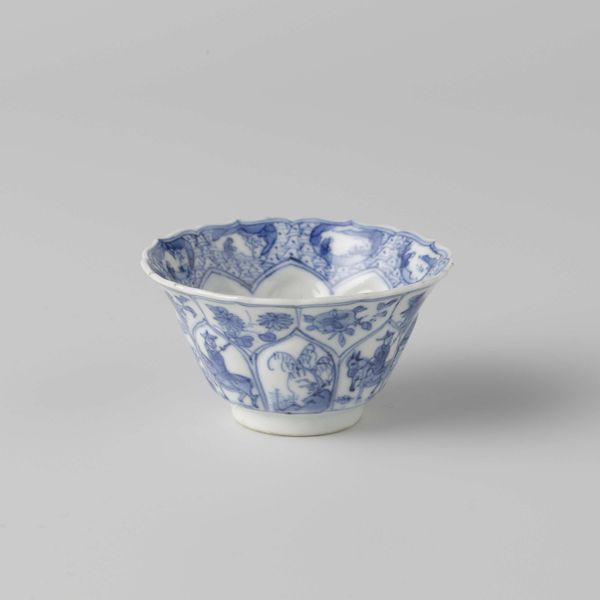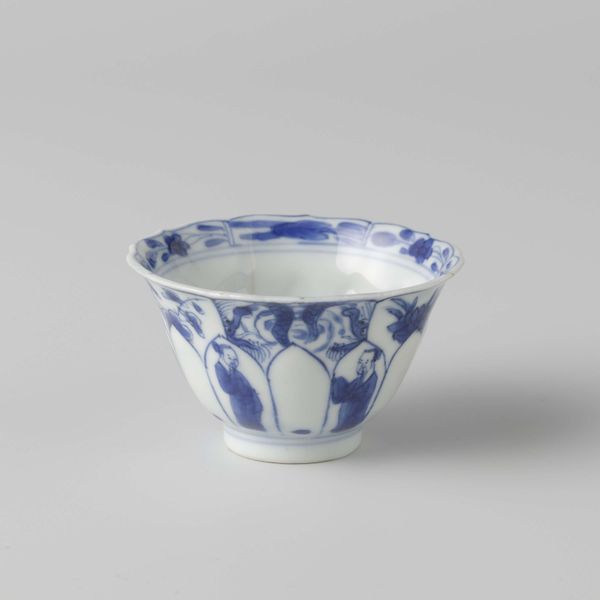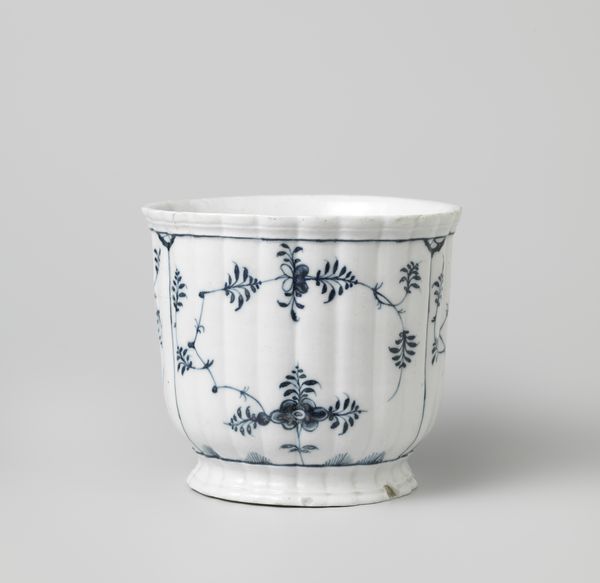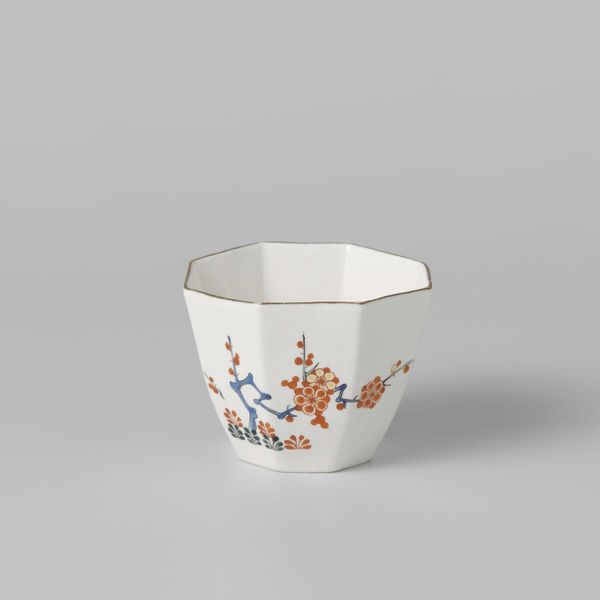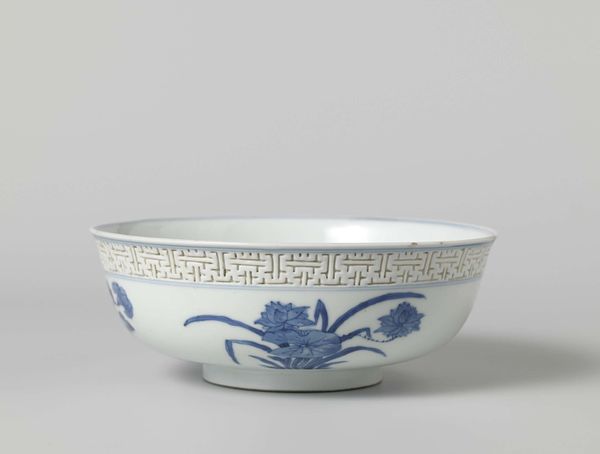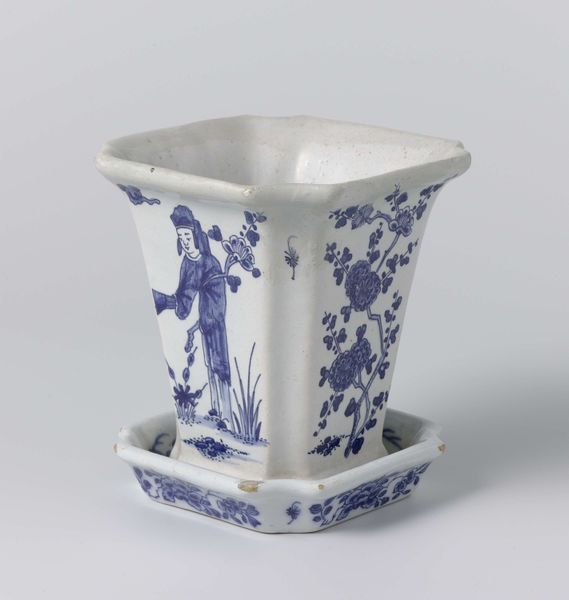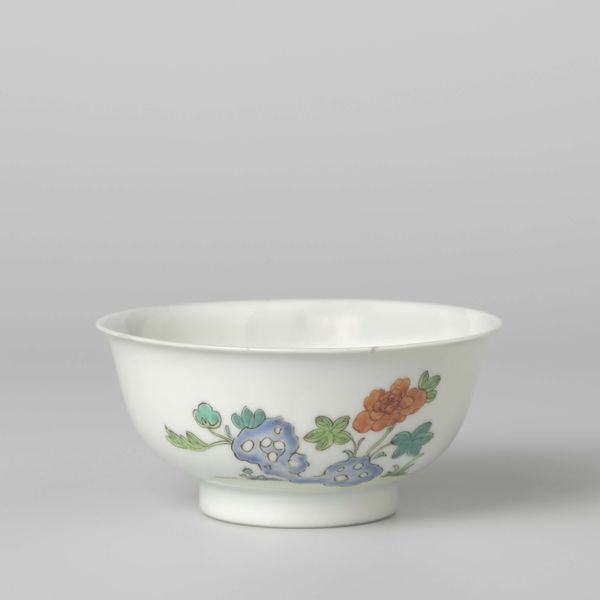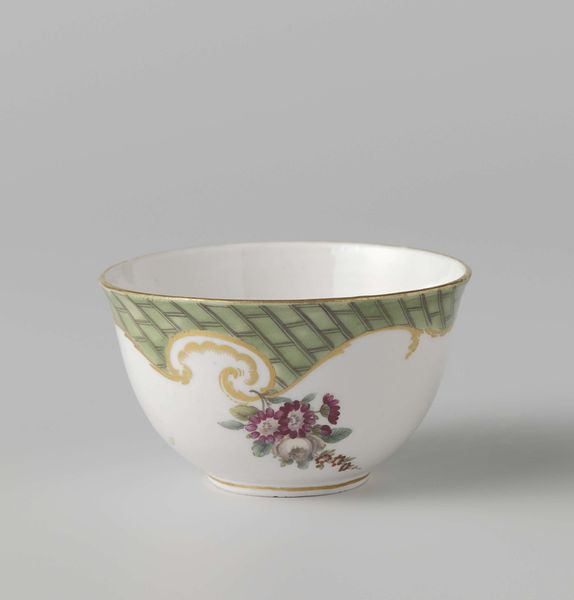
ceramic, earthenware
#
asian-art
#
landscape
#
ceramic
#
earthenware
#
stoneware
#
ceramic
#
genre-painting
#
decorative-art
Dimensions: height 7.2 cm, diameter 14.6 cm, diameter 7.4 cm
Copyright: Rijks Museum: Open Domain
Curator: Before us, we have a "Spoelkom van hardgebakken aardewerk," a creamware bowl crafted in Leeds around 1770 to 1790. Editor: It has such a quaint charm! The landscape decoration feels quite idyllic, almost like a porcelain dollhouse scene, doesn't it? Curator: Absolutely. Creamware from Leeds became quite fashionable during that period. Its accessibility, in comparison to true porcelain, broadened the market for decorative ceramics considerably. We should consider its role in domestic spaces of the time. Editor: True. It speaks volumes about who had access to beauty. But those cobalt blues and autumnal reds against the cream ground… I wonder, what stories could it have held at tea parties, at meals? Was this display, function, or aspiration? And how would we apply that to questions of cultural appropriation given the clear use of Asian motifs? Curator: Good point. The Chinoiserie style, so evident here, reflects a European fascination with East Asian aesthetics, filtered through colonial encounters and trade routes. The decorative arts became a vehicle to exoticize these cultures, influencing interior design and shaping public perception. This bowl existed within a marketplace built on uneven power dynamics, reflecting and perpetuating those imbalances. Editor: Right, we can’t ignore that. Looking at it that way shifts the feeling, from purely quaint to a more complex mix. Were these consumers even aware of the exploitative economies supporting their tablewares? Curator: Probably not to the extent that we might hope, and therein lies a lesson. Examining objects like these forces us to confront historical complicity in social inequities. We gain a nuanced understanding by considering production and reception within broader historical and power structures. Editor: Agreed. It highlights the urgent need for critical awareness—an active reading, if you will—of all the artwork we consume. Even something as seemingly harmless as a little bowl. Curator: Indeed. Perhaps by confronting our history, we can commit to a future free from these historical inequities. Editor: Precisely. Let this bowl be a starting point for critical and thoughtful conversation about historical and present systems.
Comments
No comments
Be the first to comment and join the conversation on the ultimate creative platform.

